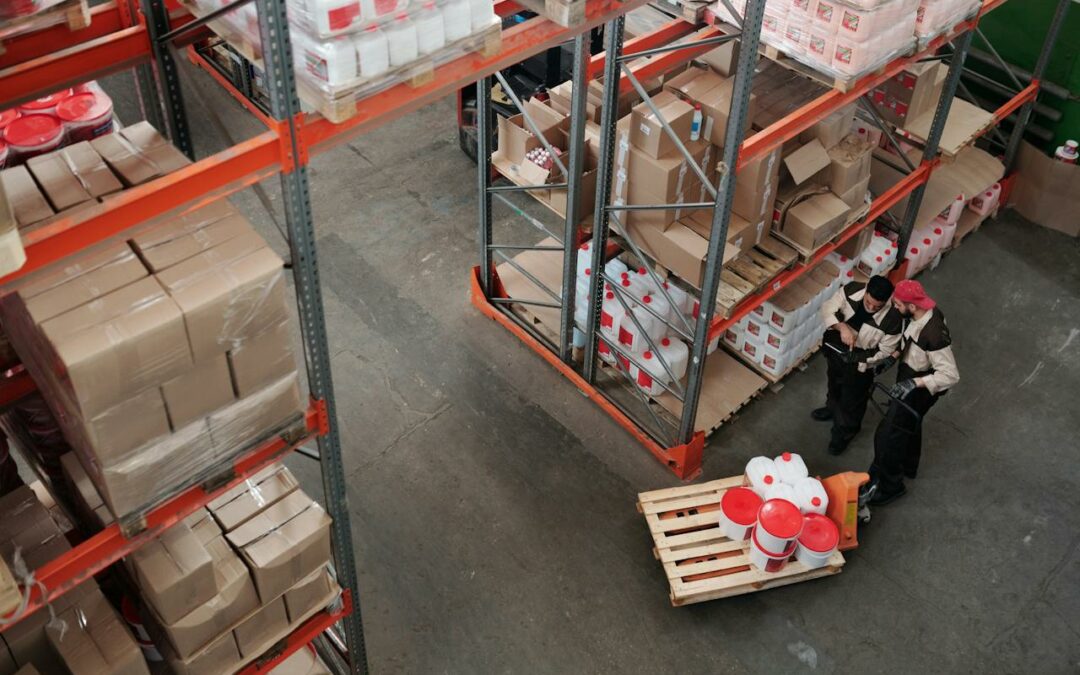Inventory management simplifies tasks such as monitoring stock, scheduling orders, determining products in your portfolio that generate the most revenue, and identifying seasonal trends just to name some of its advantages. If your inventory management is effective, you’ll be able to cut costs and generate higher profits for your company. But you’ll still experience challenges that have a negative impact on your business’ revenue regardless of its size. Learning more about these problems allows you to determine ways to solve and avoid them.
Know more about the potential challenges of inventory management below.
Inconsistent Monitoring
An erratic and non-existent monitoring system is one of the challenges of inventory management. Many companies sporadically monitor their inventory numbers. They change their schedule from weekly to monthly to twice a year or some other time frame. This inconsistent approach makes it difficult to monitor and schedule orders for top-selling items. It also prevents them from identifying trends in the shopping patterns of their customers and slow-moving products. This slows down sales and may lead to shortages of popular products.
Manual and Complex Processes
Manual inputs, paperwork, and a complicated web of processes lead to inefficient inventory management. These are prone to mistakes and waste resources. Your employees might consume hours of their work time encoding and reviewing several spreadsheets. Lack of skills, no experience, and fatigue are all factors in inconsistency and mistakes in data collection. These may cause low orders of high demand products or overstocking of poor performing items. These increase your costs and have a negative impact on your brand’s image. Invest in software to avert these problems and boost the efficiency of your inventory management. Cloud-based technology has plenty of advantages like accessibility and security.
Incorrect Numbers
You need the most current information about your inventory. This enables you to schedule orders appropriately and manage the number of products you store. Inconsistent data may lead to overstocking or low supply of a product that most customers purchase. Both scenarios cause higher expenses that cut your profits and limit cash flow. It also results in negative brand perception because a customer often sees items they want unavailable or sold out. Acquire software and tools that make it easier for your team to monitor inventory levels. This allows you to update stock data whenever new deliveries arrive or you deliver products to customers.
Inventory Loss
You might experience inventory loss in the form of spoilage, theft, negligence, and/or damage. Poor monitoring and encoding practices might lead to inconsistent data. You need accurate numbers to identify the possible causes of inventory loss. You’ll also need a consistent and accurate monitoring system in place to track all the goods in your storage facility. This allows you to get updates in real-time. This information enables you to schedule orders and maintain stock levels.
Availability of Storage Space
As your business continues to grow, you’ll receive more orders. You’ll need a bigger storage facility or more space. Storage availability can determine the number of items you can store to meet customer demand. One of the challenges of inventory management is a facility that’s too small. This might be unable to accommodate the orders you receive, which means you’ll often have less of high demand items. Storage space that’s too big might lead to overstocked shelves. Your costs will rise, and your revenue will shrink in both scenarios. Analyzing your inventory data allows you to gain insights about trends and high or low demand goods. This enables you to identify the kind of storage facility you need.
Miscommunication and Poor Coordination
You’ll need streamlined and efficient coordination and communication between partners to improve inventory management. Problems along the line may lead to delivery delays and inconsistent stock levels. This may result in confusing situations where customers don’t get their order in time and shortages in your inventory. These reflect negatively on your brand’s image. Establish communication lines with your partners. Email and talk to each other regarding schedules, orders, and deliveries to customers. Determine a definite schedule to avoid possible mishaps. Discuss backup plans so that all sides know who to respond when problems arise.
Customer Demand Trends
You can’t pinpoint when market trends shift or identify the exact time customer demand changes. You might have several products that have no customer demand or lack multiple items that customers want. Historical data provides you with insights and information about possible changes in demand and trends that can occur. This allows you to plan for them and launch campaigns that enable you to capitalize on these opportunities. You can order the right number of items to match shifts in demand.
Inefficient Scheduling and Planning
Inefficient planning and scheduling are some of the challenges of inventory management. Proper order scheduling leads to the availability of in demand products for customers. Review inventory data to identify which goods you should restock frequently. Trends in the data enable you to pinpoint when sales are usually high. It also allows you to find out which products are selling faster than others and which ones sit on your shelves for extended periods.
Oversupply of Items
Some companies have an oversupply of items because they don’t use data consistently. They fail to see trends and identify demand. Overstocking increases your company’s costs in the form of storage fees, damage, loss, spoilage, and other similar problems. These cut into your revenue and may force you to sell items at a loss or significant discount. A poor ordering schedule may also be one of the causes of oversupplying. You purchase too many items that have low demand that sit on your shelves.
Convoluted Supply Chain
A convoluted supply chain is one of the challenges of inventory management. You might have several business partners that provide delivery services or supply you with goods. This complicates the receiving and monitoring process. You might need different sets of data for similar items. Simplify your supply chain by choosing the most efficient and cost-effective business partners.
Identifying the challenges of inventory management enables you to prepare for them and find ideal solutions. Regardless of the size of your business, inventory management is important to the success of your company because it allows you to manage stock levels effectively. We at Robookkeeper can assist you with updating your accounting books while you focus on improving your inventory management. We can provide you with experienced accountants. Our team provides quality outsourced bookkeeping services.



